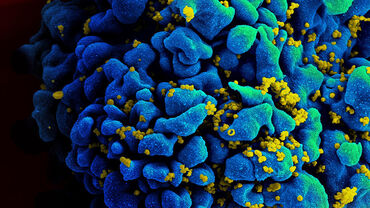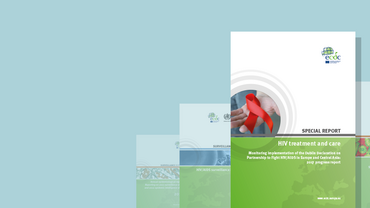Europe and Central Asia Falling Short on UNAIDS Targets for Ending AIDS by 2030
As the number of new HIV infections and AIDS-related mortality rates continue to fall in Europe and Central Asia, according to a ECDC recent report, progress towards ending the AIDS epidemic by 2030 is variable across the region, and most countries in Europe and Central Asia are currently far from achieving the 2025 targets.
Only 83% of all people living with HIV know their status, 85% of people who know their status are being treated, and 93% of people on treatment are virally suppressed. This means the region is not on track to meet the 2025 targets set by UNAIDS, which are 95% for each of the mentioned targets. ECDC data show that testing and treatment services need to be scaled up, and countries should consider implementing and expanding innovative testing interventions, such as community and self-testing services.
While traditional clinic-based testing remains common, innovative modes such as home testing and tests conducted by non-professional caregivers are gaining traction. Additionally, the affordability of HIV testing should be reviewed to ensure accessibility for all.
Legal and regulatory barriers to HIV testing persist in many countries, impacting certain populations disproportionately. Data on HIV testing uptake among key populations, such as documented and undocumented migrants, and transgender individuals, remain limited.
HIV testing must also be linked to clear standards and referral pathways for HIV care. This is particularly important with increasing levels of testing in non-traditional settings. However, only 43 out of 55 countries across Europe and Central Asia have linkage to care recommendations and only 23 countries were able to provide data on the proportion of people promptly linked to care, with rates ranging from 76% to 100%.
Stigma and discrimination faced by those living with HIV is also of concern, according to an ECDC survey for Europe and Central Asia on HIV stigma. A significant percentage of those surveyed had not disclosed their status to family or friends, with many also fearing differential treatment in healthcare settings.
Data underscore the importance of targeted education, awareness, and intervention efforts to combat stigma, especially for marginalized groups. These groups include gender, sexual and ethnic minorities, prisoners, people who inject drugs, and sex workers.
Discriminatory laws and policies persist in many countries in the region, hindering progress, perpetuating health inequalities and negatively impacting countries’ responses to the HIV epidemic. More work must be done in order to meet the target of less than 10% of countries reporting discriminatory laws.
HIV-related stigma and discrimination elimination is the subject of a high-level meeting in Sevilla, Spain on 15 September, where the political declaration "HIV and Human Rights: Political action to achieve ZERO stigma" will be discussed, reviewed and proposed for adoption on 1 December 2023, World AIDS Day, in the European Parliament.
Overall, there must be a revitalised push towards the targets outlined in UNAIDS Global AIDS Strategy if countries in Europe and Central Asia are to achieve SDG 3.3 of ending the AIDS epidemic.






